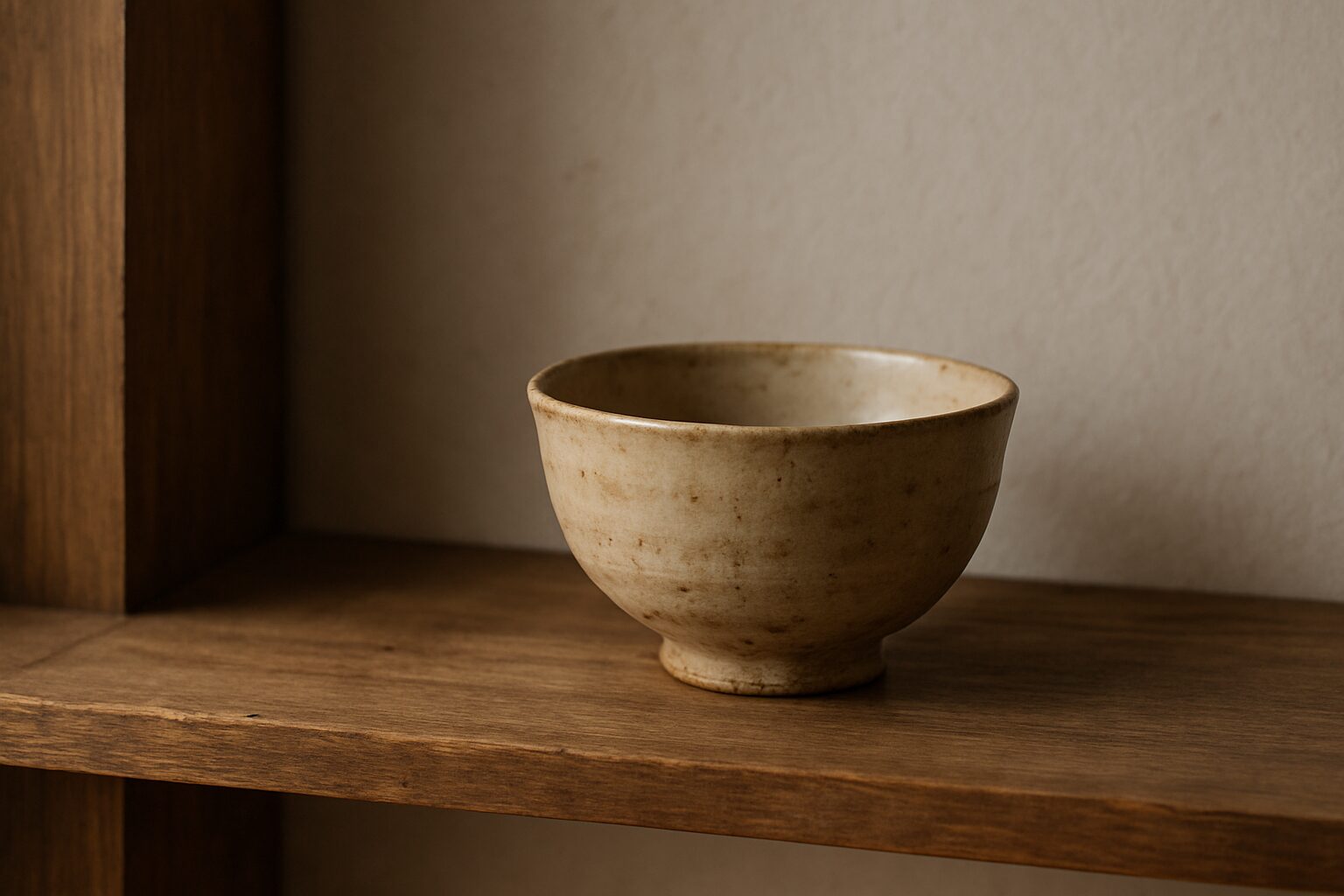By Kokoro Still
Some crafts are not made in hours.
They unfold through time.
Behind every bowl that fits the hand,
every blade that moves without effort —
there is time.
Not time spent,
but time quietly offered.
Shokunin do not rush.
Because what they shape
is not meant to be consumed,
but to accompany a life being lived.
The Shape of Time
There is a bowl in my cupboard that I never reach for in a hurry.
Its surface is not flawless.
It holds slight irregularities,
as if the fingers that shaped it
left behind a trace of pause.
I found it in a quiet pottery village in Gifu.
The shelves were low.
The light was soft.
The potter was not there —
but his name had been pressed into the foot of the bowl.
What drew me to it was not its glaze or form.
It was the sense that this bowl had been waiting.
Waiting in the clay,
waiting as it dried,
waiting for the fire to come.
Waiting for someone who would not rush.
The Rhythm of Shokunin
In Japanese, shokunin means more than “craftsman.”
It refers to someone who listens to what they shape —
not as a tool,
but as a presence to be met.
They respond to the softness of raw clay,
to the resistance it gives back,
to the hush of the kiln.
The bowl on my shelf
is not a product.
It holds the stillness of time
that did not move forward,
but chose to remain.
The bowl is not perfect.
But it is whole.
When Use Becomes Invitation
We often speak of using things.
But some things change how we move.
When I eat from that bowl,
I don’t scroll.
I don’t speak.
I don’t rush.
Not because I decide to stop,
but because something in the bowl
asks for stillness
without words.
The person who made it
was not producing an item.
They were shaping a moment
meant to be lived slowly.
What I hold is not just a form.
It is what has stayed —
and now meets me,
gently.
The Invisible Meeting
A shokunin never sees the final place of their work.
They do not know who will eat from the bowl,
who will cut with the blade,
who will step across the tatami they laid.
But they trust —
that somewhere,
someone will sense what was quietly left there.
This is not about legacy.
It is about something resonating
between hands and time.
And sometimes,
we pause —
not out of reverence,
but because something has found its place in us.
A bowl shaped by a shokunin does not ask to be admired.
It asks to be lived with.
Its quietness is not emptiness.
It is space prepared for your presence.
And when you meet it —
not with haste, but with care —
you are not alone.
You are accompanied
by a stillness
that waited for you
long before you arrived.
Featured image: The image was created by AI (ChatGPT)



Comments